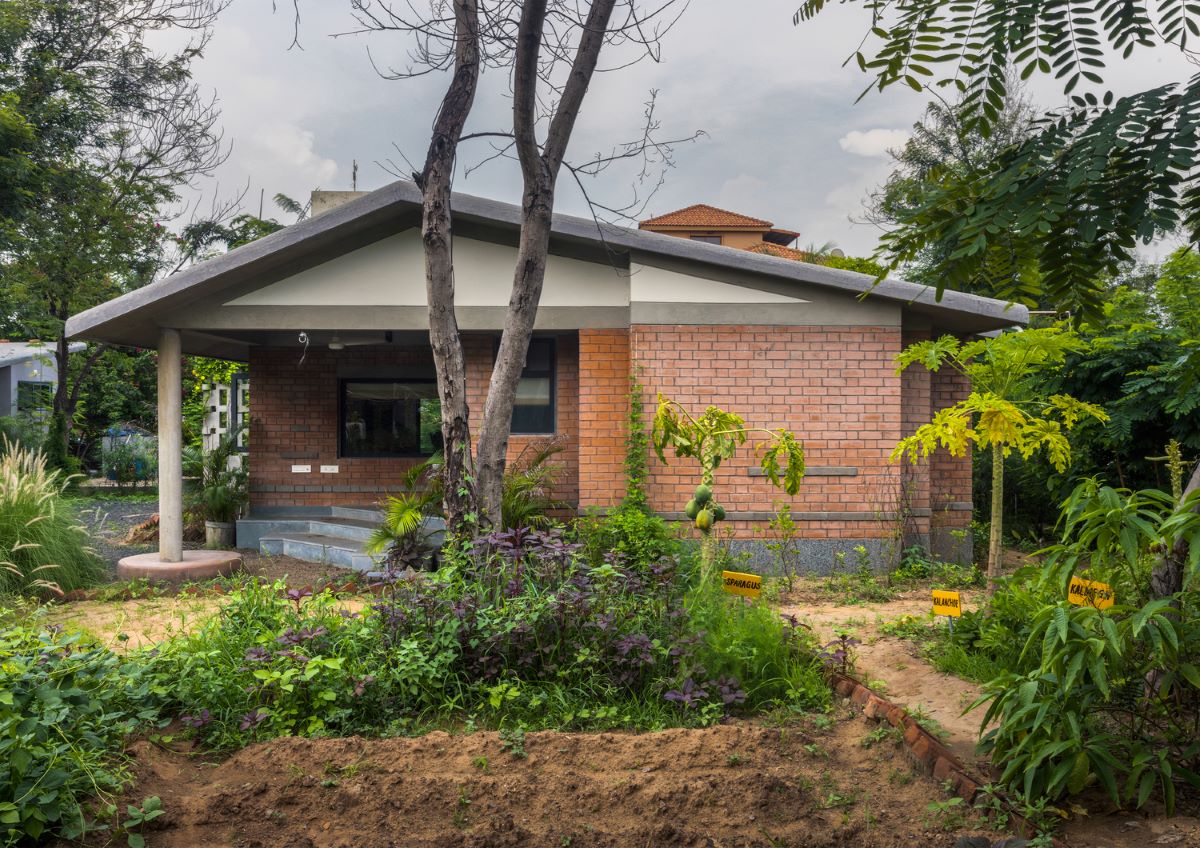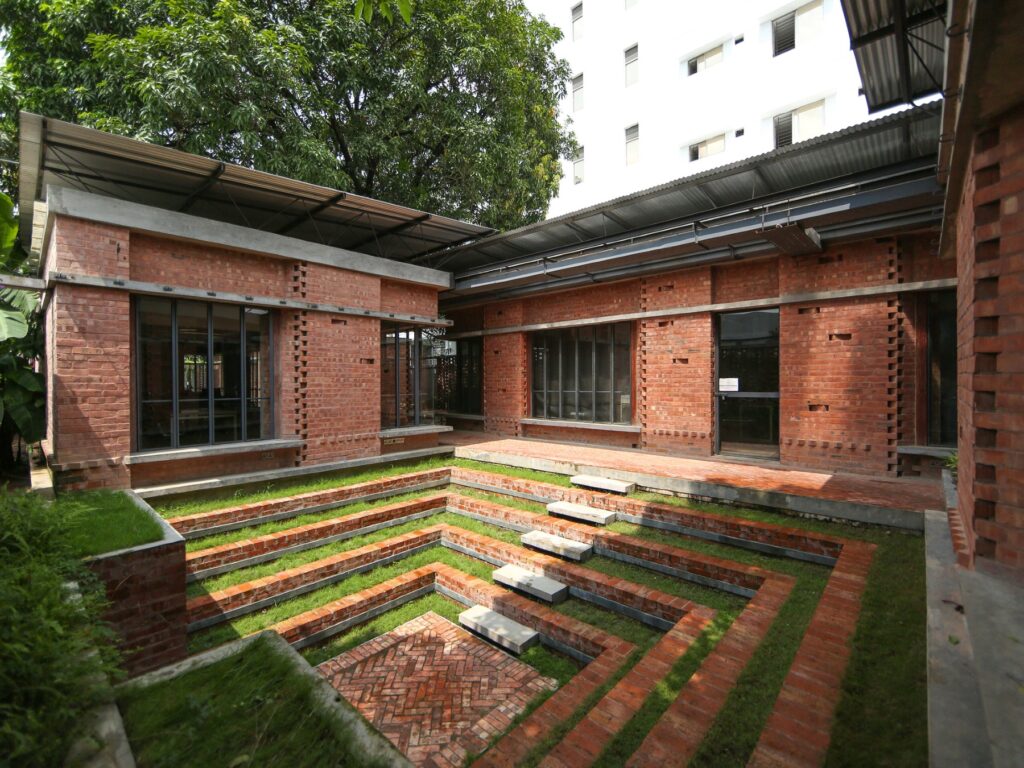
The project is located in the densest commercial area of Dhaka city, and the function and nature of the business of Teach For Bangladesh are quite in contrast with the site surroundings. It stands out from the surrounding corporate shiny high-rise buildings in its very humble and down-to-earth structure. As it goes, the edifice and the character of its spaces stand out in the utilisation and interplay of natural resources like trees, plants, water bodies, the sun, wind, rain, and shadows.
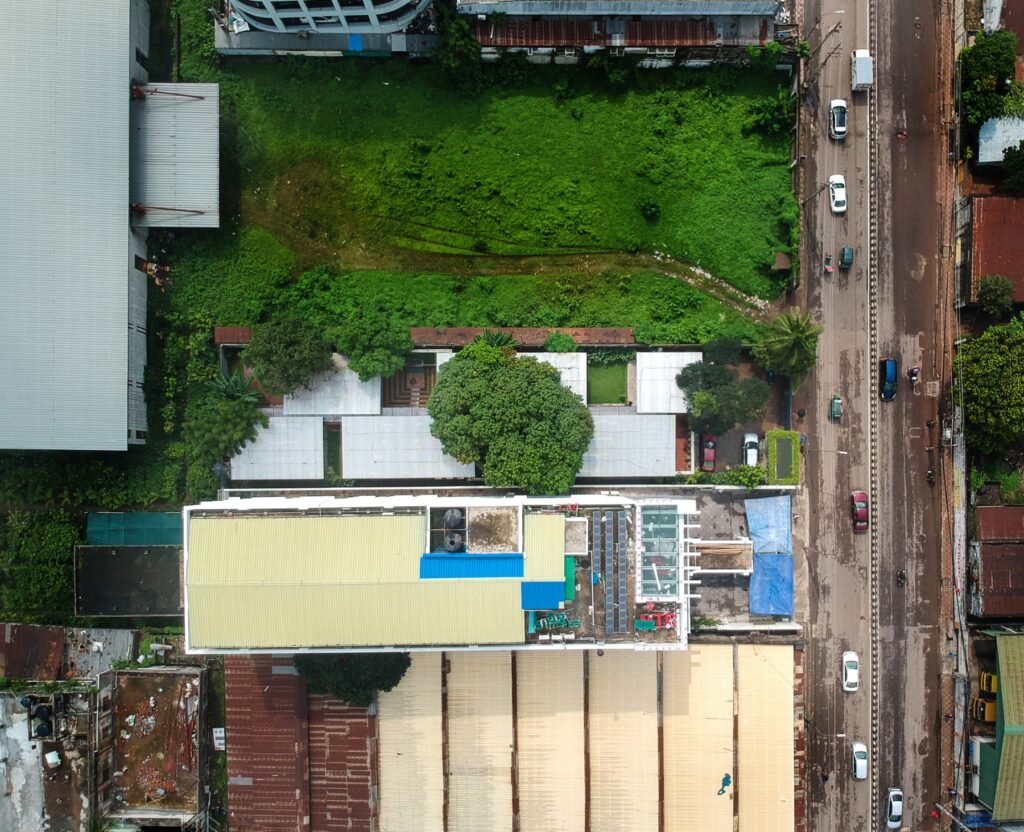


The architectural volume goes green rather than being a glass and concrete corporate building. This way, environment-friendly local gas-burnt bricks, corrugated CI & plastic sheets, custom-made mild steel frames for all the openings, and cement-finished floors take over expensive materials to adorn the structure with environment-friendly materials. To make a very minimum circulation, which is a semi-open space bound by only a one-sided wall shared with the pods, the circulation configuration has been designed straight across the site and located in the middle just between the series of pods. It also plays a role to make the structure economic, which was the foremost goal to be achieved.
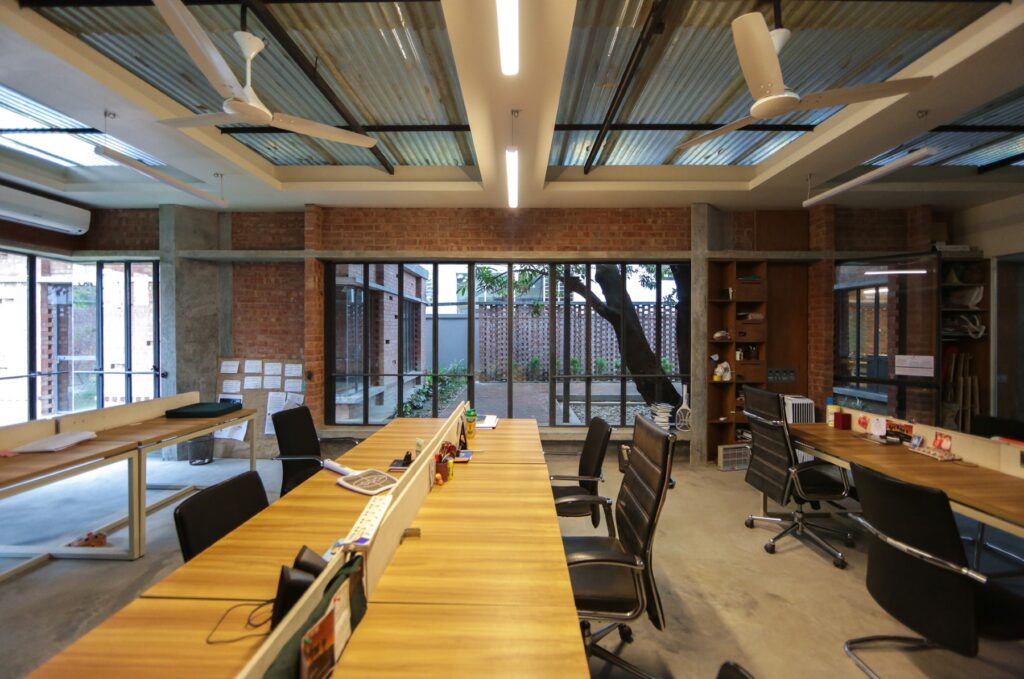
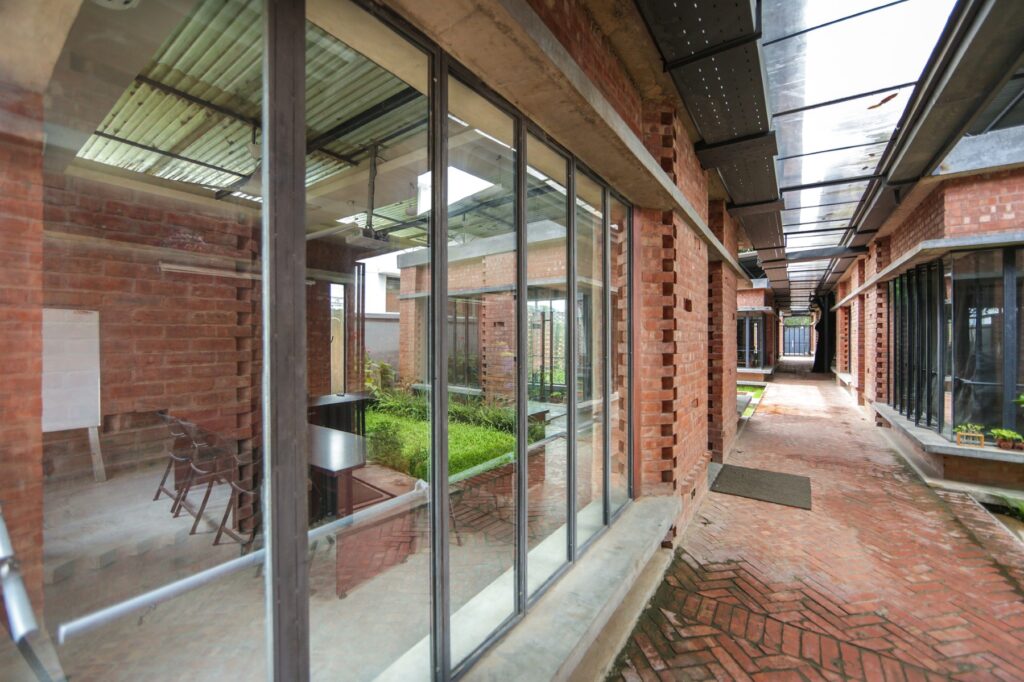
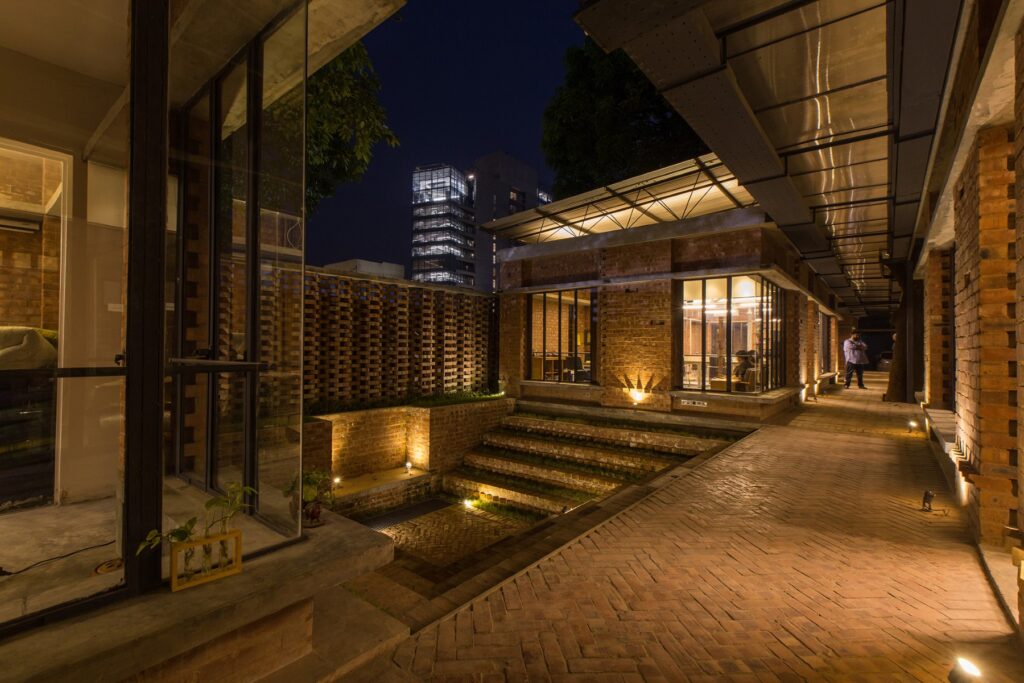


Each of the pockets of open space between two consecutive pods has also been utilised as a common large function to be used during leisure by a large number of users, like a food court, discussion area, play arena or exercise zone, and even an amphitheatre, which can be covered by a tensile structure during adverse weather for accommodating hundreds of trainees to attend a workshop or lecture session.
The linear sky can be framed through the straight circulation spine, over which a polycarbonate sheet has been used as a translucent canopy to let in daylight and make the spaces brighter. The trusses to hold the roofing system have been designed with customised MS rods, such that it makes the structure lightweight.



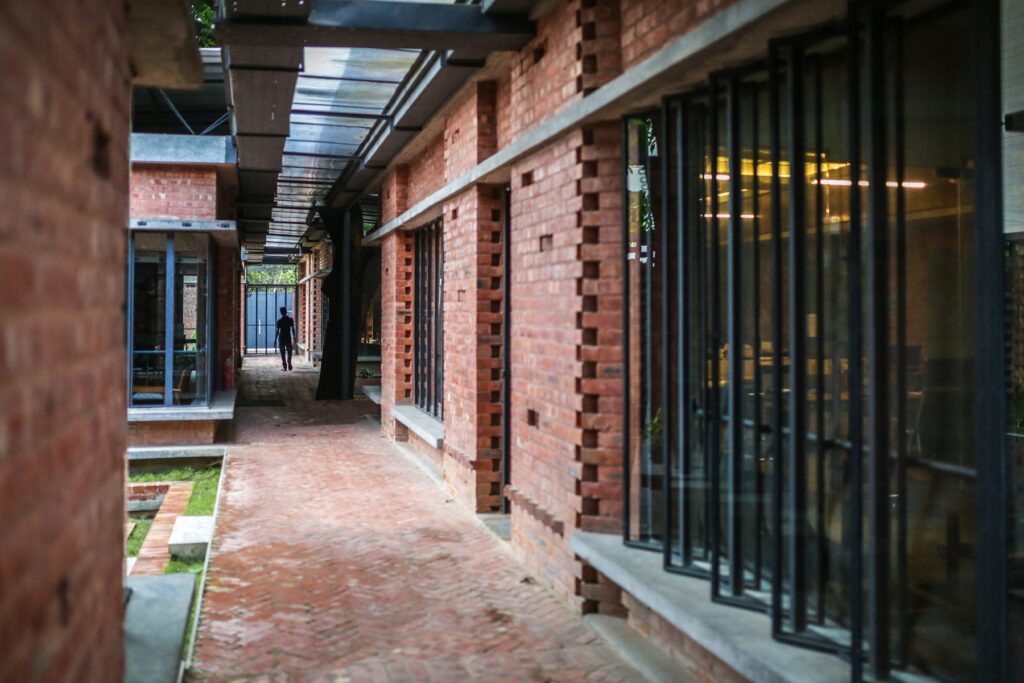
Through the straight but eventful journey, one will find secured spaces like workstations, meeting rooms, and training areas in various pods, which have been arranged in between the natural setting of a huge mango tree, wide grass covers, a few figs and neem trees, and also some man-made landscape like an amphitheatre and a lily pond. Above all, the building spaces are arranged as if the spaces are ‘weaving the nature’.
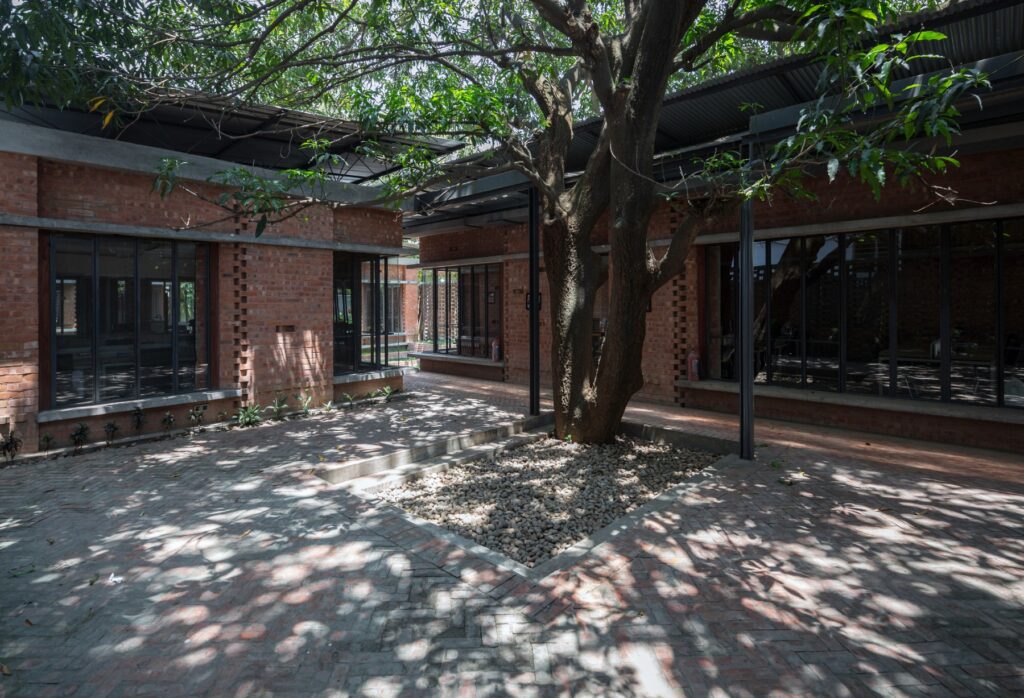




Initially, the existing trees on site appeared as an obstacle to design, but we overcame the challenge by using them as design elements. Finally, the trees have been preserved, and seating arrangements have been designed under the tree canopies as a backdrop for a natural setting in sharp contrast to the concrete jungle in the site surrounding. An amphitheatre, designed to host a gathering of around 100 people, is the most striking feature of the compound. A demanded large lecture gallery has also been incorporated into the design so that the outdoor space, shaded with trees, is often bustling with lively activities like discussions or gossip during leisure and even lectures or informal meetings, creating an exciting atmosphere.


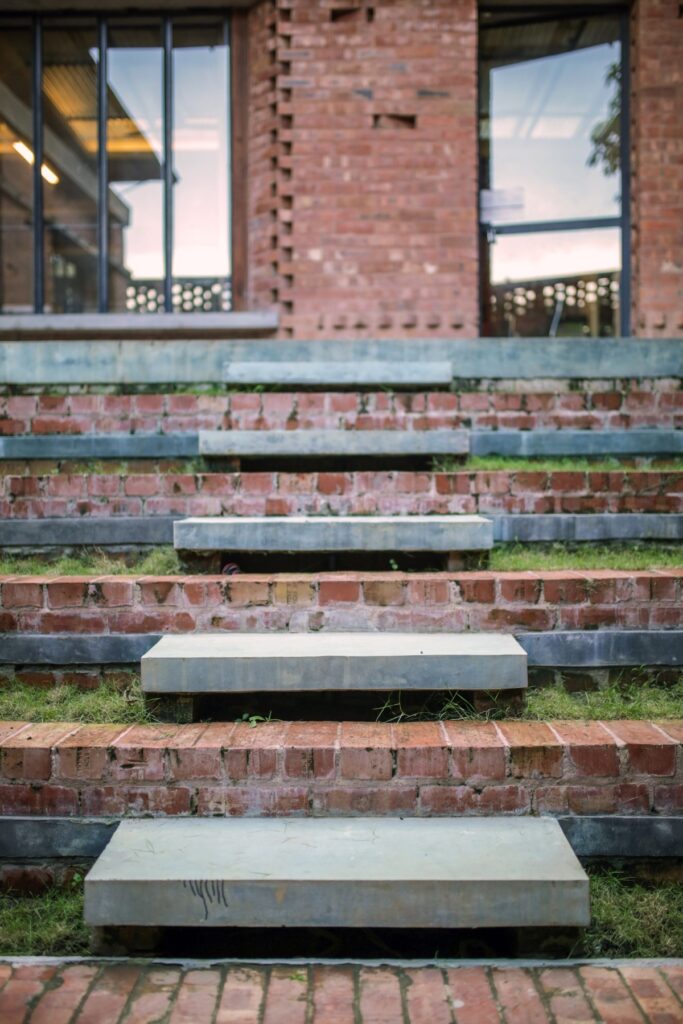
Project Drawings:


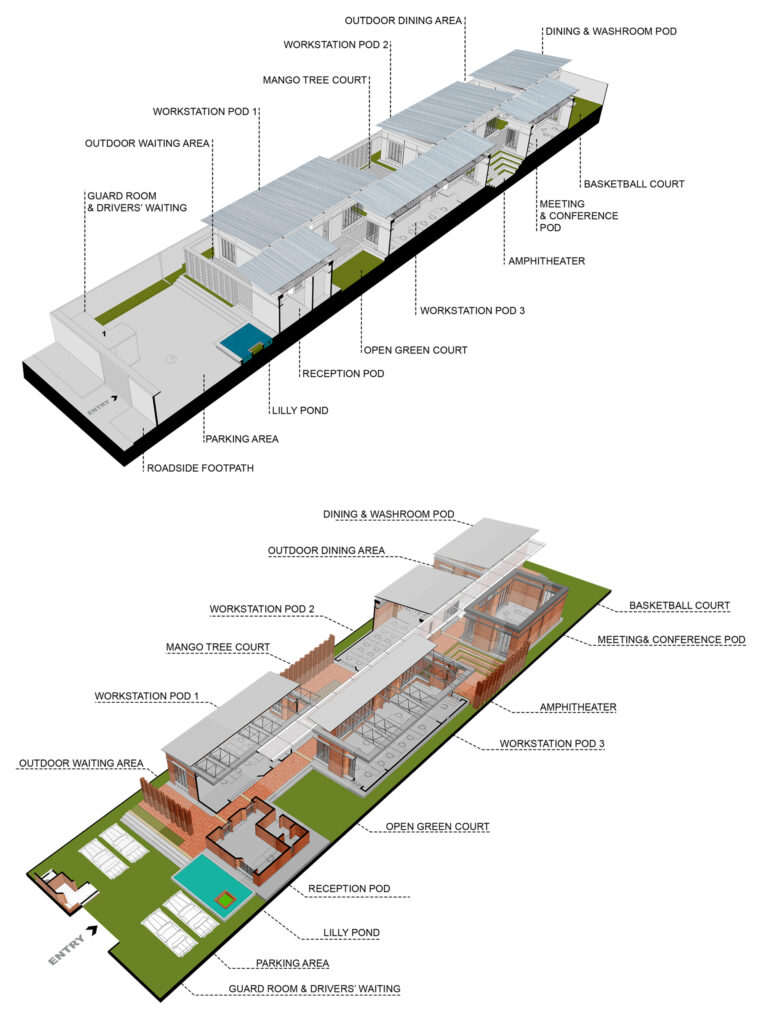



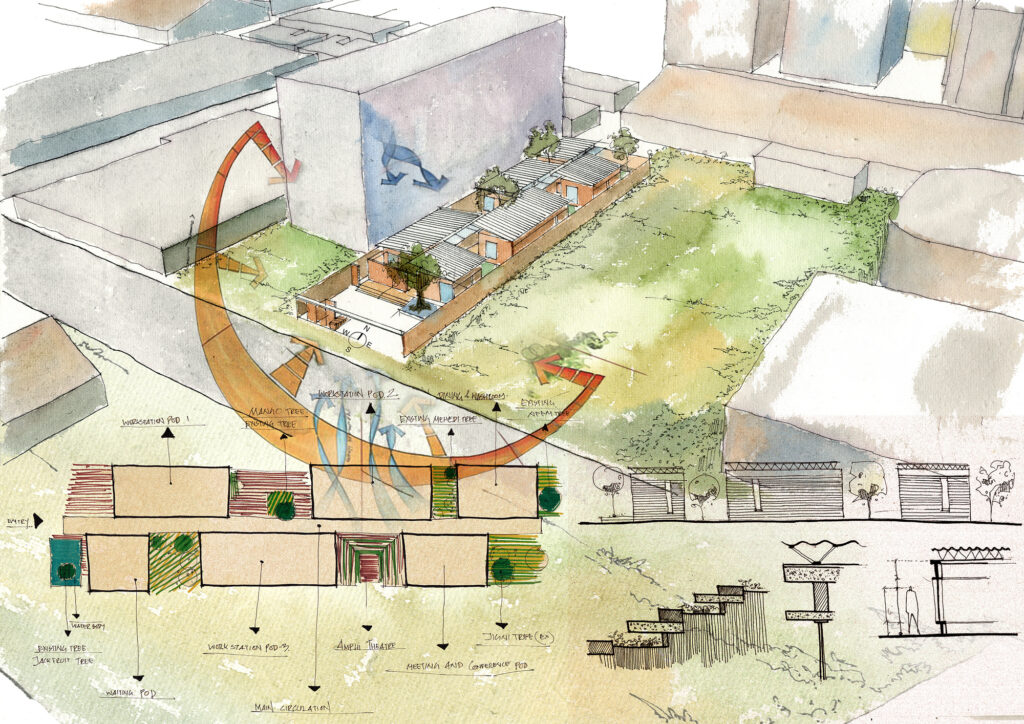

Project Details:
Name: Teach for Bangladesh Office Building
Location: Dhaka, Bangladesh
Area: 1008 sq. mt.
Status: Completed (2017)
Architects: Studio Dhaka
Design Team: Muhammad Moniruzzaman, Muhammad Moniruzzaman, S M Mushfeq-us-Saleheen Chowdhury, Shaikh Raihan Ashraf, Md. Abid Ali, Md. Saiful Islam, Md. Dulal Hossain
Client: Teach for Bangladesh
Consultants:
Engineering: ESSDEE Infrastructure Limited
Principal Structural Engineer: Mynul Hossain
Structural & Mep Consultant: MAK Consultants
Photographs: Asif Salman, Maruf Raihan
Description: Studio Dhaka

